A Beginners Guide to Crochet Hooks: Crochet Hook Terminology
As a beginner there are many terms that we hear thrown around that may sound like a foreign language. My team and I have put together a series of posts that I hope will help take the mystery out of crochet hooks and help you feel more confident in selecting the best fit for you.
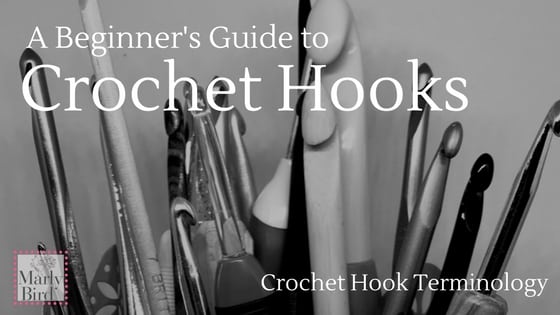
*This post contains affiliate links. By clicking one of these links and making a purchase a small portion will go to the blog. The price that you pay does not change and the small commission I make helps me to bring you more free content like what you will find in this post. Thank you for your continued support.*
In this series:
Over the next few weeks we will break down what we feel are the most important things to consider when selecting a crochet hook. Whether you are a new crocheter or someone who has loved this craft for ages we hope that we can teach you something new about the options that are available to you.
Here are the topics that we will cover:
- Crochet Hook Terminology
- Crochet Hook Material
- Crochet Hook Handles
PLEASE NOTE: All of the topics covered in these posts are written from our personal experience. You, or someone you know, may have a different opinion. Most of what we cover is all about your personal preference in how the hook feels. These posts are to guide you in the right direction of selecting your first hook or helping you to see all of the options that are out there to find something that is a better fit for you.
Basic Crochet Terminology:
Before we can start your journey in selecting the best hook for you we need to go over the basics. Just as you would for anything, if you want to do something right you should start with the basics it is a very good place to start!
Today we will be talking about different terms that you may have heard in the crochet community. We will explain them in general terms and how they pertain to selecting the best hook for you.
Remember that your crochet hook and yarn are the two tools that you will be using to work your craft. You not only want to make sure that you are using high quality items that will last but you want to make sure that they are comfortable so that you can enjoy hours of craft time.
Bates vs. Boye:
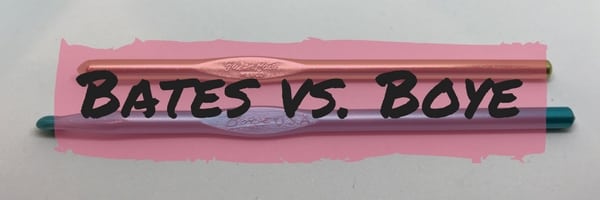
I think that we should start with the age old question, Bates vs. Boye? I am sure that you have all heard this question at some point in your crochet journey. What people are really asking is do you prefer an inline hook or a tapered hook.
Inline, tapered what are you talking about? Let me show you the difference.
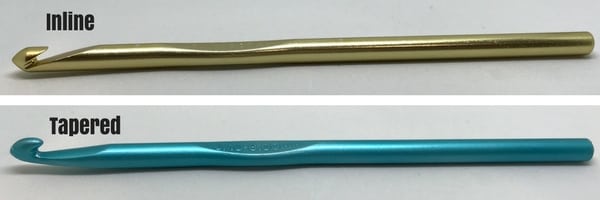
Really it becomes a personal preference on which you like better and which works better for you. One is not better than the other. It comes down to how you crochet and which is easier for you to grab the yarn and complete your stitches.
Another thing to consider is how do you grip your hook, this could change your opinion on the question above.
Pencil vs. Knife Grip:
These terms are pretty self explanatory but some people don’t realize that there are different ways that you can hold your hook. Let me start by saying that these are the two most common methods of holding your hook, there may be some other ways out there but we will stick with these two.
A pencil grip is when you hold your hook like a pencil. It rests in your hand as a pencil would as you are writing.
A knife grip is when you hold your hook as if you were going to cut a steak.
Neither way is superior to the other and many suggest that you know how to crochet both ways to take pressure off your hands.
Crochet Hook Anatomy:
Really anatomy class for crochet? YES! It is important to know the different parts of your hook and what they are used for.
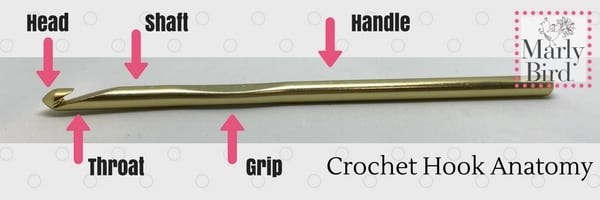
Head: The head of your crochet hook is at the very top, just like our own head. There are two different types of heads, pointed and rounded. The use of either will depend on preference and the yarn that you are using.
If you have a yarn that has a lot of plies you might want to stick with a round hook so that you aren’t splitting your yarn all of the time. If you are working with thin yarn you might like the pointed head to make it easier to get into the smaller stitches.
Throat: The throat is the section where you catch the yarn while making your stitches. Some hooks have a longer or shorter throat and again you need to try them out to find what works better for you.
Shaft: The shaft is the section of the hook that sizes your stitches. It is important that when you make your stitches that you slide the loop down to the shaft to give it the correct size.
When you look at the size of the hook they are really talking about the diameter of the shaft.
Grip: The grip is the section that you hold on to. In our upcoming posts you will see that there are many handle options and that the grip can be covered or left open. The grip is usually where you thumb rests while you are working your stitches.
Handle: The handle is the remainder of the hook. This is the section that sits in the palm of your hand. In some of the up coming posts we will show you many of the styles of handles that are available on the market.
Crochet Hook Types:
We must also consider the different terms you will hear when we talk about hooks. There is the traditional crochet hook, a steel hook, a Tunisian hook or even a double ended hook. Each has its purpose.
Traditional Crochet Hook: This is the most common type of hook that you will use. It is used on lace weight (or sock weight) yarn up to super bulky.
Steel Hook: Steel hooks are very tiny. They are sized only by numbers and are used to make things like dollies or jewelry.
Tunisian Hook: Tunisian hooks, sometimes referred to as the afghan hook, are used to work Tunisian stitches. Tunisian is a style of crochet that resembles knit stitches.
Double Ended Hooks: Double ended hooks can be used for Tunisian crochet or they can be used to help correct knitting mistakes. By having two ends you don’t need to remove the hook when trying to ladder up dropped stitches in your knitting.
So what crochet hook do I buy:
When starting out I recommend that you start simple. Start with a Bates and a Boye hook, which do you like better? From there you can start to test out materials and handles that you like. Just remember that each project will be different. It is always appreciated if you have multiple hooks to choose from so that you have the best fit for you and your project.
Don’t feel that you need to start out with a full set of hooks. Try purchasing one at a time to see if you like the brand and then grow your collection from there. You may find that you like one style for a regular crochet hook and another when you work Tunisian.
EXPERIMENT and try new tools!!!
Also on the Blog:
Categories: Crochet, Fun Finds and Tools, Uncategorized


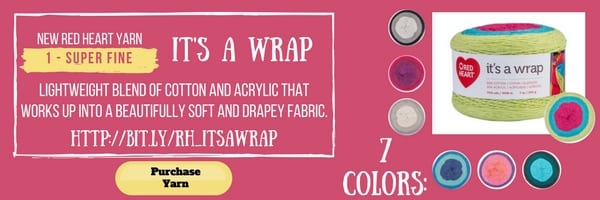
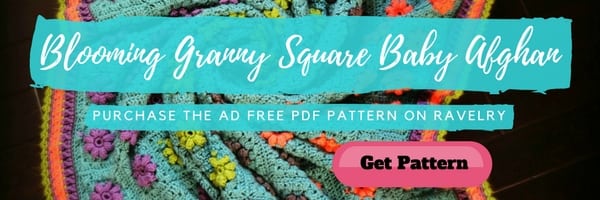







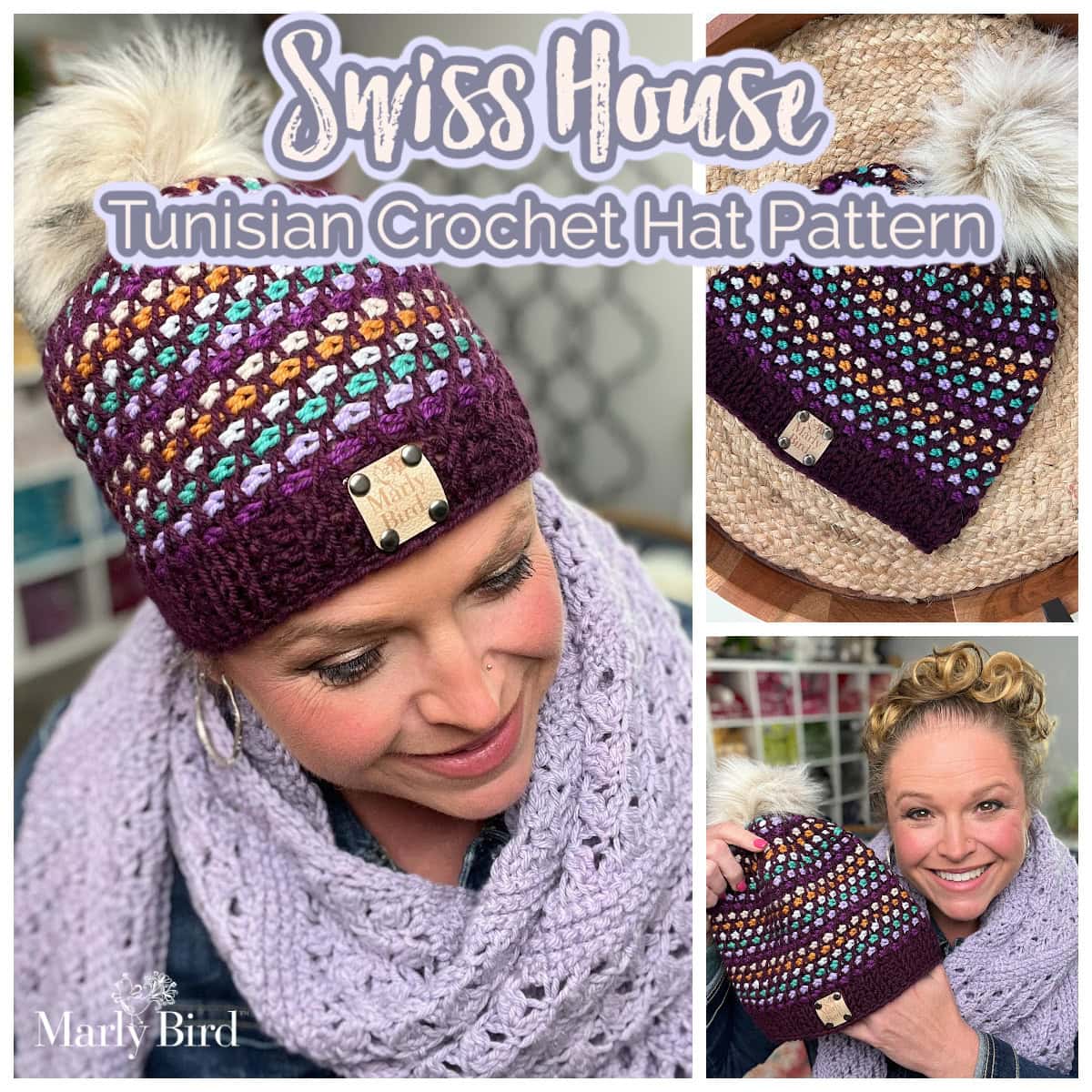


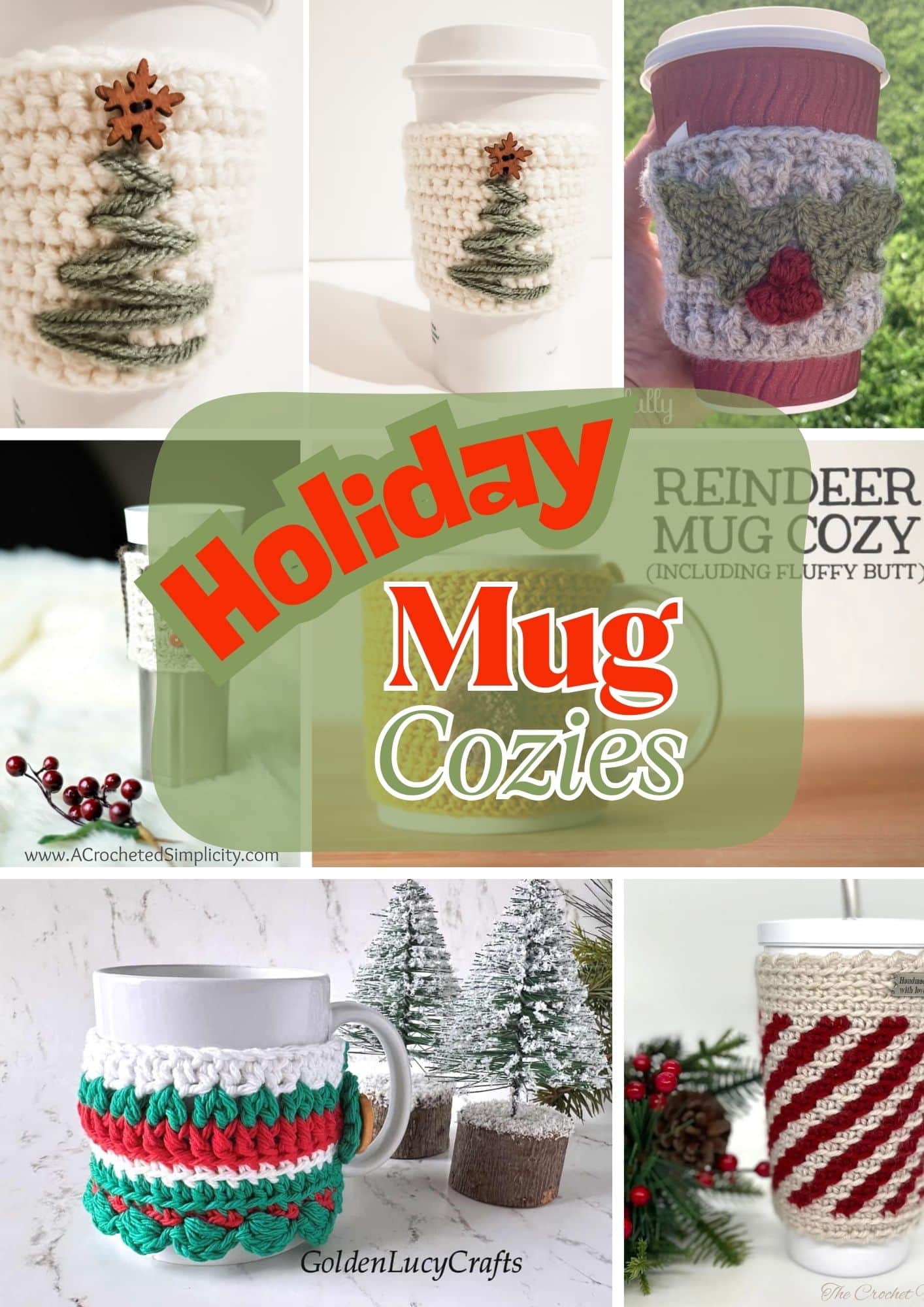

Great information. I have hooks that came from my grandmother, really small. She mostly made dollies for everyone. Now that I have started to crochet I find I prefer hooks that have the ergonomic handles so my hands don’t get so tired or cramped. Can’t wait for the next posting on hooks. Thanks!
I was really looking forward to this article. I admire you as a crochet educator and guru, i send people to your blog and YouTube channel at every opportunity and so I expected to get something useful from your take on an age old debate. Instead I was disappointed, badly. I think the info you gave is too old school and basic and I think you have done a disservice to new crocheters. You have trotted out the same information we’ve been reading for years, and it doesn’t seem like you did any new research. This is not your grandma’s work bag! With all of the info on repetitive motion injuries, arthritis, ergonomics, etc you never even offered bamboo, wood, rubber, resin, etc, as an option. Some new crocheters will look at your article and think aluminum bates or boye are the only choices. For anyone with hand stress issues the discussions on social media overwhelmingly favors the Clover Amour, Tulip Etimo, Furls, or the lower cost no name brands with the softer warmer handles over steel, aluminum or plastic which are cold and unforgiving. You didn’t mention interchangeable crochet hooks, both regular hooks or the interchangeable corded Tunisian hooks and many other innovative styles. Now that Red Heart and Lion Brand are offering so many new textures in their yarn lines and more crocheters are using what were traditionally knitting yarns we need to know that metal is less grippy than bamboo and so bamboo works better with slippery shiny yarns like a Jamie baby yarn for maintaining guage and metal works better with toothier yarns, like Super Saver. I could go on and that brings me back to your blog post. You could have written a decent length pamphlet on the differences in MODERN crochet hooks, instead you gave us the same OLD information my granny gave me when she taught me to crochet 50 years ago. Sorry Marly, I think this post really missed the mark.
Robin, maybe I read the post incorrectly but didn’t Marly say this was just the first of a series about hooks? My gosh. Why try and cram all the information into just one posting?
If that’s the case, I will happily keep an open mind and look forward to additional info, but the tone of the article seemed to wrap it up and end it.
I absolutely agree with Marley! There’s a good chance, that if a new crocheter is inundated, overwhelmed, with so much information and so many head-spinning choices… In a single entry mind you, it may completely dissuade that person from even trying this fabulous (new to them) craft! I say keep em coming, I love and snow your work and teaching methods Marley thank you so much!
Thanks for the kind message Beverly. You hit the nail on the head. We wanted to break this down into small chunks and start at the beginning so that the new crocheter could work though this and take it one step at a time. If you get too much information at once it is hard to process. Think about all of the hooks that you see when you go to a big box store and all the choices and that is only the TIP of the iceberg with how many choices there are out there!! Hope you liked this post and the others that are coming!
That is correct Jean, we will have a few more posts in this series each talking about something different that you should know about crochet hooks. We didn’t want to put it all in one post so that the new crocheter didn’t feel overwhelmed. We have all be there in the beginning when we were just trying to figure it out! Hope you enjoyed this post and the others that are coming!
Marly, I trust you and you’ve never let me down. I always find something useful any time you post information. Thanks!
I am sorry I agree with Robin. Was really really hoping for new information. But I guess for beginners it’s basic. But I still think it should have included all the new ergonomic hooks we all see today and what you think about them. Looking forward to seeing something new and fresh!
Hi Donna-Thanks for the feedback. I hope that you give us a chance and read the other posts that are coming in the series. The next one will be talking all about the different materials that you can get for your crochet hooks. Have a great week.
Hi Robin-Thanks for the feedback. I am sorry to hear that you were disappointed with this post. This is the first in a series of posts. We wanted to start and make sure that new people to crochet would have a place to go to learn what all of the terms are. We have a few more posts coming out in regards to selecting the right hook for you and the next one is on the different materials that you can select. We wanted to give out the basic information first and have people figure out if they like inline or tapered better as that will impact your choices going forward. I hope that you will give us a chance and read the upcoming posts as well. Have a great week!
I’ll keep reading, sorry if I was too fast off the starting blocks. Like I said, you have been my go to referral for crochet and now knitting too. Thank you for clearing up my assumption that that was the end of the discussion.
I would love to have duration on creating my on crochet projects. Can’t wait to win my new book!
I’m excited about this post and this series. I have held a crochet hook for many years but did not know there were so many nuances. Of course, there are! I know a lot about knitting needles and I look forward to learning more about hooks. Thanks, Marly!
Hi This was very interesting. I was wondering do you happen to know the sizes that are available in the Susan Bates brand crochet hooks. Have a small as a C I was wondering if there is an A size Susan Bates.
I have a 8″ hook that is double ended and completely flat. Is it flat because that is a preference for some, or is it for some special use? Hook to hook it is size and shape consistent.
I don’t know of any reason for it to be flat. It might just be the make of it. I have seen in books that very old crochet hooks were made from flat pieces of wood. It might just be a preference for how it feels while working the stitches.